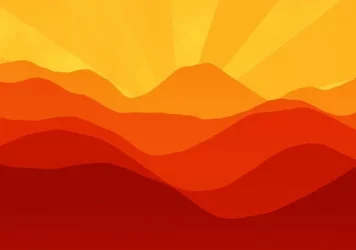DTF Printing: Exploring the Art of Direct-to-Film Transfers
Ann2025-06-21T17:01:17-06:00What is DTF Printing?
In the ever-evolving world of textile printing, DTF printing, which stands for Direct-to-Film Transfers, has emerged as a revolutionary technique. This innovative method has gained significant popularity among designers and businesses due to its impressive results and versatility. In this article, we will delve into the world of DTF printing, exploring its intricacies, benefits, and potential applications.
DTF printing is a cutting-edge digital printing process that enables designs to be directly transferred from a special film to various fabrics. Unlike traditional methods that involve multiple intermediate steps, DTF printing streamlines the process, making it faster and more efficient. This technique ensures vibrant and detailed prints, capturing every nuance of the design with stunning accuracy.
The DTF Printing Process
The DTF printing process involves several key steps:
Step 1: Design Creation
The first step is to create the design that will be transferred onto the fabric. This design is usually crafted using computer software, allowing for intricate and complex patterns to be realized effortlessly.
Step 2: Film Printing
Once the design is finalized, it is printed onto a specialized DTF film using a compatible printer. The DTF film acts as the carrier that will transfer the design to the fabric later in the process.
Step 3: Adhesive Powder Application
After the design is printed onto the film, an adhesive powder is applied to the printed area. This powder plays a crucial role in the transfer process, ensuring that the ink adheres firmly to the fabric.
Step 4: Heat Press Transfer
The DTF film, with the adhesive powder and ink, is then placed onto the fabric. The combination of heat and pressure from a heat press machine activates the adhesive, enabling the ink to bond securely with the fabric fibers.
Step 5: Peel-off
Once the transfer process is complete, the fabric is allowed to cool, and then the DTF film is carefully peeled off, leaving behind a vibrant and permanent design on the fabric.
Advantages of DTF Printing
1. Exceptional Print Quality
DTF printing offers unparalleled print quality, boasting sharp details and vibrant colors. This technique allows for the reproduction of intricate artwork with precision, making it ideal for designs that demand high-resolution output.
2. Versatility Across Fabrics
One of the standout features of DTF printing is its compatibility with various fabrics. Whether it’s cotton, polyester, blends, or even leather, DTF printing can produce exceptional results on a wide range of materials.
3. Cost-Effectiveness
The simplified DTF printing process reduces production time and eliminates the need for additional materials like screens or transfer papers, making it a cost-effective solution for small to large-scale printing.
4. Long-lasting Results
The prints achieved through DTF printing are highly durable and resistant to fading, ensuring that the designs remain vibrant and eye-catching even after numerous wash cycles.
Applications of DTF Printing
DTF printing’s versatility makes it applicable in various industries and creative endeavors, including:
Apparel and Fashion
DTF printing allows fashion designers to experiment with elaborate patterns and detailed graphics on garments, creating unique and personalized clothing pieces.
Promotional Merchandise
Businesses can utilize DTF printing to craft promotional merchandise like branded t-shirts, caps, and bags, effectively spreading brand awareness.
Sports and Teamwear
Sports teams and enthusiasts can benefit from DTF printing by customizing sportswear with team logos and player names, fostering a sense of unity and identity.
Home Decor
DTF printing extends its reach to the realm of home decor, where customized fabrics can be used for upholstery, cushions, and curtains, elevating the interior design.
The Future of DTF Printing
Conclusion
In conclusion, DTF printing has transformed the textile printing landscape, offering unmatched print quality, versatility, and cost-effectiveness. This cutting-edge technique empowers designers and businesses to create stunning and enduring prints on various fabrics, opening up endless possibilities for customization and personalization.
To learn more about how DTF printing can be used in your project contact us today!
FAQs
1. Is DTF printing suitable for all fabric types?
Yes, DTF printing is compatible with a wide range of fabric types, including cotton, polyester, blends, and even leather.
2. Can DTF prints withstand multiple wash cycles?
Absolutely! DTF prints are highly durable and resistant to fading, ensuring their longevity even after numerous washes.
3. Is DTF printing cost-effective for small businesses?
Yes, DTF printing eliminates the need for screens or transfer papers, making it a cost-effective solution for both small and large-scale printing.
4. Can DTF printing reproduce intricate designs accurately?
Yes, DTF printing excels at reproducing intricate artwork with sharp details and vibrant colors, making it perfect for designs that demand high-resolution output.





